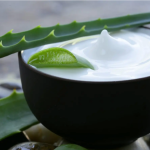Keeping a yard free of pesky weeds can feel like an endless battle, but trust me, it doesn’t have to be. With the right strategies and a little effort, you can enjoy a lush, weed-free lawn without constantly reaching for chemical solutions. The key lies in understanding how weeds grow and tackling them before they take over.
I’ve learned that a proactive approach works wonders. From proper lawn care to natural remedies, there are plenty of DIY methods that save time and money. If you’re looking for expert-backed advice, resources like Better Homes & Gardens provide valuable insights to help you keep your yard in top shape. Ready to roll up your sleeves? Let’s dive into some simple yet effective tips for maintaining a yard you’ll love.
Importance Of Maintaining A Weed-Free Yard
Managing a weed-free yard enhances its appearance and overall health. Weeds compete with grass and plants for sunlight, water, and nutrients, often leaving desired vegetation undernourished. This imbalance depletes your yard’s vitality over time.
A yard free of invasive weeds minimizes maintenance efforts. Weeds like crabgrass or dandelions reproduce quickly, creating recurring problems if left unchecked. Regular monitoring helps curb their spread, reducing the reliance on products like weed killer for lawns or intensive manual labor.
Maintaining a weed-free yard increases property value. A well-cared-for lawn reflects attention to detail and creates a welcoming outdoor space. Potential buyers often view a lush, weed-free yard as a sign of responsible home maintenance.
Weeds contribute to pest infestations by providing habitats for insects and rodents. A weed-free lawn eliminates these environments, lowering the likelihood of pest issues and protecting other plants from potential damage.
Preventing weed growth also supports environmental health. Avoiding chemical-based solutions and focusing on natural methods protects the surrounding ecosystem and promotes sustainable yard care practices.
Effective Prevention Strategies
Taking preventive measures is crucial for maintaining a weed-free yard. Addressing weeds at their root minimizes competition for nutrients and ensures a healthy lawn.
Soil Preparation And Testing
Healthy soil discourages weed growth and supports robust grass and plants. I test the soil pH and nutrient levels using a home soil test kit. Ideally, soil pH for most lawns ranges from 6.0 to 7.0. If imbalanced, I amend the soil with lime or sulfur. Aeration improves soil structure by allowing better water and nutrient flow. I remove debris and compacted soil before planting seeds or laying sod to give desired plants an advantage over weeds.
Using Mulch To Suppress Weeds
Applying mulch creates a barrier that blocks sunlight from reaching weed seeds. I use organic materials such as bark, straw, or shredded leaves, which also enrich the soil over time. I spread a 2 to 3-inch layer around garden plants and along pathways, ensuring not to pile it against plant stems to avoid rot. For consistent suppression, I regularly replenish mulched areas and remove visible weeds before they mature.
Strategic Planting Techniques
Dense planting reduces space for weeds to grow. I select hardy ground covers and native plants that outcompete weeds due to their adaptability. For vegetable gardens, I use companion planting by combining species like marigolds and tomatoes, which naturally deter weeds. Lawn areas benefit from overseeding with weed-resistant grass varieties, maintaining a strong turf that leaves no room for invaders. I ensure proper spacing and watering routines to prevent thinning, which encourages weeds to establish.
DIY Weed Removal Tips
Tackling weeds manually and naturally ensures a healthier yard without relying on chemicals. These methods target weeds effectively while preserving surrounding plants and grass.
Hand-Pulling Techniques
Removing weeds by hand is a precise and chemical-free approach. I ensure to pull weeds when the soil is moist, as this helps remove the entire root system. Using tools like a dandelion digger or hoe allows me to reach deep-rooted weeds without disturbing nearby plants. To avoid regrowth, I dispose of uprooted weeds properly, keeping them out of compost piles where seeds might spread. Regular inspection of my yard, especially after rain or watering, makes it easier to spot and remove weeds before they multiply.
Creating And Using Natural Weed Killers
Applying a natural weed killer for lawns is an eco-friendly removal method. A simple homemade mixture of vinegar, salt, and dish soap targets stubborn weeds effectively. I spray this solution directly onto weeds on sunny days, allowing the sun to accelerate drying. For larger areas, boiling water also works as a weed killer, but I apply it carefully to avoid harming desirable plants. Consistent application and focus on weed-prone spots, like patio cracks or garden edges, ensure better results with minimal effort.
Maintaining Long-Term Weed Control
Practicing consistent methods keeps yards free from recurring weeds. Long-term solutions focus on preventative care and addressing vulnerable spots.
Regular Lawn Care Practices
Frequent maintenance discourages weed growth significantly. Mowing grass to a height of 2.5–3 inches creates shade, blocking sunlight from reaching weed seeds. Aerating compacted soil annually improves water and nutrient absorption, promoting healthier grass that outcompetes weeds. Watering deeply but infrequently strengthens grass roots, reducing space for invasive plants.
Applying organic compost once a season enriches soil quality and supports natural suppression of weeds. While fertilizers boost lawn health, overuse can encourage weed sprouting. If necessary, choose a targeted weed killer for lawns that avoids harming desirable grass varieties.
Managing Weed-Prone Areas
Proactive measures contain weeds in problem spots. Using mulch in garden beds or around trees prevents seed germination by blocking light. For pathways or driveways, durable ground covers, such as landscaping fabric topped with gravel, offer long-term weed control.
Inspecting and treating edges, corners, and other neglected areas stops weeds from spreading. Planting ground covers like clover in bare patches reduces opportunities for weed invasion. Addressing emerging weeds immediately, before they establish deep roots, prevents larger infestations later.
Common Mistakes To Avoid
Neglecting Regular Maintenance
Skipping regular maintenance often leads to weed infestation. I ensure my lawn is mowed, watered, and aerated consistently to keep it healthy and resilient against weeds.
Overusing Weed Killer for Lawns
Excessive reliance on chemical weed killers can harm grass and nearby plants. I prefer natural or DIY weed control methods while reserving weed killers for lawns as a last resort for severe cases.
Ignoring Soil Health
Unhealthy soil encourages weed growth. I test soil pH and add appropriate amendments like compost or organic fertilizers to create a balanced environment that supports grass over weeds.
Incorrect Weed Removal Techniques
Improper weed removal, such as pulling only the tops, leaves roots behind to regrow. I remove weeds after rain or watering, when the soil is loose, to ensure complete root extraction.
Failing to Mulch Properly
Applying too thin a layer of mulch allows sunlight to reach weed seeds. I always spread 2–3 inches of organic mulch to suppress weed growth and retain soil moisture effectively.
Planting Too Widely
Sparse planting provides space for weeds to thrive. I use dense planting strategies, ensuring minimal gaps between desired plants, to outcompete weeds naturally.
Not Addressing Weeds Promptly
Allowing weeds to mature results in faster spreading and more competition for nutrients. I act quickly as soon as weeds emerge, preventing them from flowering and setting seeds.
Lynn Martelli is an editor at Readability. She received her MFA in Creative Writing from Antioch University and has worked as an editor for over 10 years. Lynn has edited a wide variety of books, including fiction, non-fiction, memoirs, and more. In her free time, Lynn enjoys reading, writing, and spending time with her family and friends.















